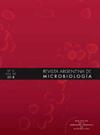[微生物标志物在艰难梭菌感染进展中的作用]。
IF 2.1
4区 生物学
Q4 MICROBIOLOGY
引用次数: 0
摘要
目前诊断艰难梭菌感染(CDI)的主要挑战是发现预后最差的患者。我们研究了粪便中毒素的存在、低周期PCR (Ct)中毒素B基因的扩增以及检测到的二元毒素或核型与严重程度、复发和预后不良之间的关系。无论临床是否需要,在成人腹泻粪便中都有产毒艰难梭菌的研究。采用免疫分析法对谷氨酸脱氢酶(GDH)、毒素A (TcdA)和毒素B (TcdB)进行鉴定,采用PCR法对毒素B (TcdB)和二元毒素(cdtA)的基因编码进行鉴定。用PCR-Ribotyping分型和MLVA (multi - locus-variable number tandem DNA repeat analysis)分型方法对产毒株进行分型。677份标本中检出82例(12.1%)CDI。Ct≤27.5的患者通常存在严重程度、复发和预后不良的标准(59.3% vs 40.7%, P= 0.15;80% vs 20%, P= 0.10;60.3%对39.7%,P=。055年,分别)。复发时平均Ct较低(25.48;SD = 2.41;P = .058)。经logistic回归分析,最可能提示预后不良的变量为Ct≤27.5 (OR=2.663;95%可信区间= .983 - 7.636;P = .059)。总之,毒素B PCR的周期阈值可能是CDI严重程度、复发和预后不良的标志。观察到的核糖型多样性是显著的,相同核糖型的分离株之间没有克隆关系。本文章由计算机程序翻译,如有差异,请以英文原文为准。
Impacto de los marcadores microbiológicos en la evolución de la infección por Clostridioides difficile
The main current diagnostic challenge in Clostridioides difficile infection (CDI) is to detect patients with the poorest prognoses. We have studied the association between the presence of toxin in the feces, the amplification of the toxin B gene at low cycles in PCR (Ct), and the detection of the binary toxin or ribotype with severity, recurrence, and poor prognosis. Toxigenic C. difficile has been investigated in adult diarrheal feces, regardless of the clinical request. Glutamate dehydrogenase (GDH), toxin A (TcdA) and toxin B (TcdB) have been assessed by immunoassay and the gene encoding toxin B (tcdB) and the binary toxin (cdtA) by PCR. The toxigenic strains recovered by toxigenic culture were typed by PCR-Ribotyping and subtyped by MLVA (multilocus-variable number tandem DNA repeat analysis). Eighty-two (82) cases of CDI were detected from 677 samples (12.1%). Patients with Ct ≤ 27.5 often presented criteria for severity, recurrence, and poor prognosis (59.3% versus 40.7%, P=.15; 80% versus 20%, P=.10; and 60.3% versus 39.7%, P=.055, respectively). The mean Ct was lower when recurrence was observed (25.48; SD = 2.41; P=.058). By logistic regression, the variable most likely to indicate a poor prognosis was Ct ≤ 27.5 (OR = 2.663; 95% CI=.983-7.636; P=.059). In summary, the cycle threshold of the PCR for toxin B is a possible marker of severity, recurrence, and poor prognosis in CDI. The diversity of ribotypes observed is remarkable, with no clonal relationship between isolates of the same ribotype.
求助全文
通过发布文献求助,成功后即可免费获取论文全文。
去求助
来源期刊

Revista Argentina de microbiologia
MICROBIOLOGY-
CiteScore
3.30
自引率
0.00%
发文量
46
审稿时长
>12 weeks
期刊介绍:
La Revista Argentina de Microbiología es una publicación trimestral editada por la Asociación Argentina de Microbiología y destinada a la difusión de trabajos científicos en las distintas áreas de la Microbiología. La Asociación Argentina de Microbiología se reserva los derechos de propiedad y reproducción del material aceptado y publicado.
 求助内容:
求助内容: 应助结果提醒方式:
应助结果提醒方式:


